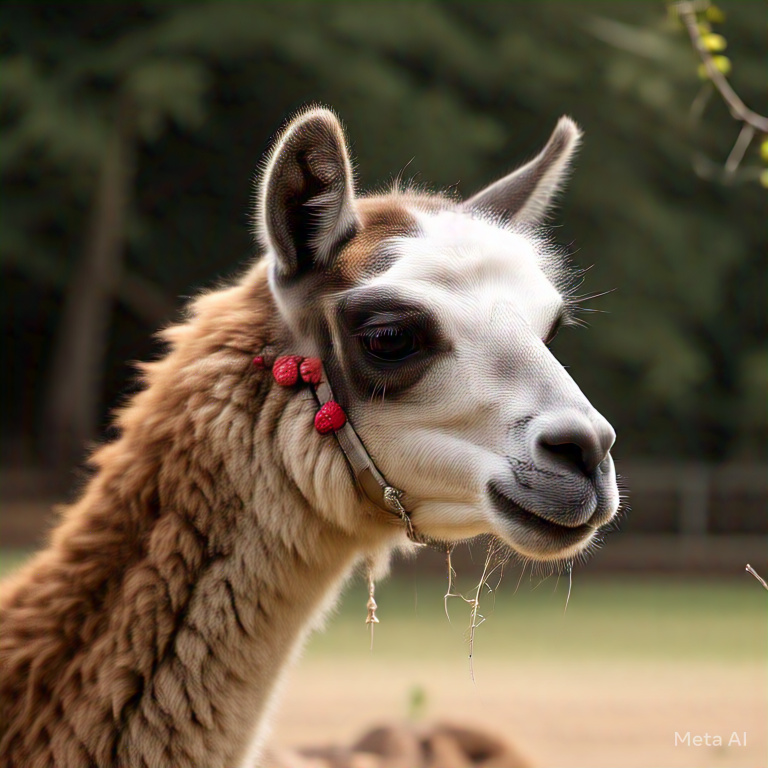Llama breeding can be a rewarding endeavor, whether you’re looking to grow your herd for companionship, fiber production, or as part of a sustainable livestock operation. However, achieving healthy and high-quality offspring requires careful planning, understanding of genetic principles, and proper management of the animals’ health and environment. In this guide, we’ll explore the essentials of llama breeding, from preparation to postnatal care.
1. Understanding Llama Breeding Basics
Before starting, it’s crucial to understand some fundamental aspects of llama reproduction.
- Breeding Age: Female llamas (dams) are typically ready to breed at 18-24 months, while males (sires) reach sexual maturity around 2-3 years.
- Gestation Period: The average gestation period for llamas is about 350 days, though it can vary by a few weeks.
- Seasonality: Llamas are induced ovulators, meaning the act of mating triggers ovulation. This allows for year-round breeding but requires careful timing for the offspring’s optimal survival.
2. Preparing for Breeding
a. Selecting Breeding Stock
The quality of your offspring largely depends on the genetics of the parents. When choosing breeding pairs:
- Physical Health: Ensure both the dam and sire are in excellent health, free from genetic disorders, and have a good body condition score.
- Conformation: Look for llamas with strong frames, straight legs, and good teeth alignment, as these traits improve offspring health and usability.
- Temperament: Calm and manageable parents are likely to produce offspring with desirable temperaments.
- Fiber Quality: For fiber production, prioritize llamas with dense, fine, and uniform fleece.
b. Health Checks
- Vaccinations: Update all vaccinations, including those for clostridial diseases.
- Parasite Control: Conduct a fecal test and deworm both animals as necessary.
- Nutritional Support: Provide a balanced diet rich in essential vitamins and minerals to ensure the dam is in optimal condition for conception and pregnancy.
3. The Breeding Process
a. Introducing the Pair
Llamas prefer a calm and stress-free environment for breeding. Introduce the male and female in a large, enclosed area where they feel secure. Observe their interactions, as some females may refuse to mate if not receptive.
b. Signs of Successful Mating
- The male will engage in a behavior called “orgling,” a vocalization during copulation.
- After mating, a receptive female may lie down, while a non-receptive one will spit or avoid the male.
c. Post-Mating Care
- Conduct a pregnancy check via ultrasound 2-4 weeks post-mating.
- Minimize stress for the dam and continue with a high-quality nutritional program.
4. Pregnancy and Prepartum Care
a. Monitoring the Dam
- Physical Changes: Watch for signs of pregnancy, such as a growing abdomen and behavioral changes.
- Diet Adjustments: As pregnancy progresses, increase feed intake to support fetal growth. Supplement with high-quality hay and grains if needed.
b. Providing a Safe Environment
- Maintain clean and dry living spaces to prevent infections.
- Avoid overcrowding, as pregnant llamas need room to move freely and stay stress-free.
5. Birthing (Parturition)
a. Signs of Labor
- Restlessness, frequent lying down, and changes in appetite often precede labor.
- A “waxing” udder (small amounts of colostrum visible) and vulva relaxation are also key indicators.
b. Assisting During Birth
Llamas typically give birth during daylight hours, and most deliveries occur without complications. However, be prepared to assist if:
- The cria (baby llama) is in an abnormal position.
- The dam shows prolonged signs of distress without progressing in labor.
6. Postnatal Care for the Dam and Cria
a. Immediate Care
- Drying the Cria: If the cria is born in a cold environment, dry it immediately to prevent hypothermia.
- Ensuring Colostrum Intake: The cria should nurse within the first 2-4 hours to receive vital antibodies from the dam’s colostrum.
b. Health Checks
- Inspect the cria for proper limb alignment and any signs of weakness or deformities.
- Monitor the dam for excessive bleeding, retained placenta, or signs of infection.
c. Nutrition
- Provide the dam with plenty of fresh water and nutrient-rich feed to support milk production.
7. Raising High-Quality Offspring
a. Socialization and Training
- Handle the cria gently from an early age to accustom it to human interaction.
- Begin halter training at around 6 months for easier management.
b. Herd Integration
- Gradually introduce the cria to the herd, ensuring a safe and stress-free transition.
c. Regular Health Maintenance
- Vaccinate the cria as per your veterinarian’s guidelines.
- Conduct routine parasite checks and provide proper nutrition to support growth.
Conclusion
Breeding llamas is both an art and a science. By carefully selecting breeding pairs, maintaining excellent health and nutrition, and providing attentive care during pregnancy and after birth, you can ensure the production of healthy and high-quality offspring. Whether your goal is to expand your herd or improve its genetic quality, these best practices will set you up for success.
With proper planning and dedication, llama breeding can become a fulfilling venture that benefits both your farm and the animals under your care.

